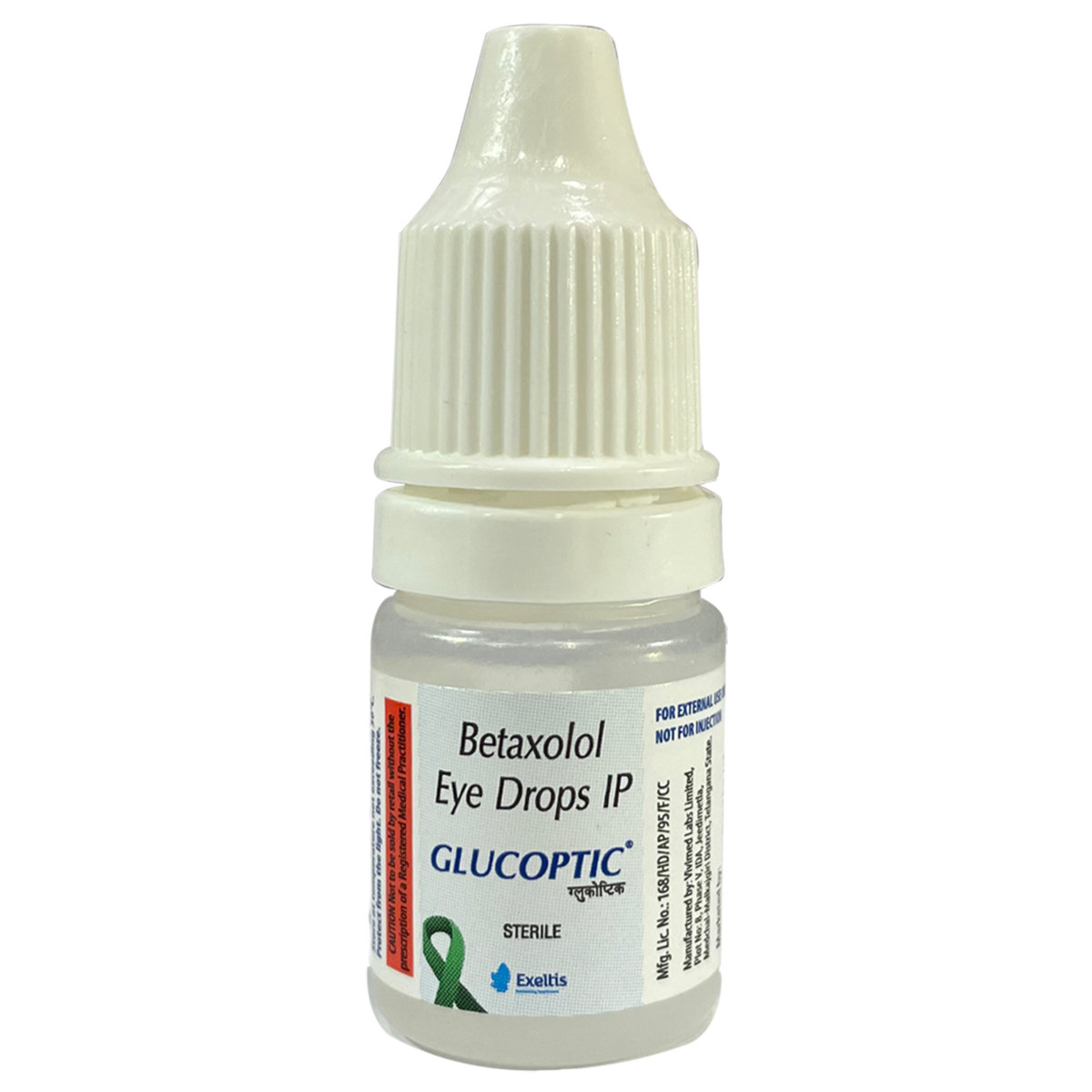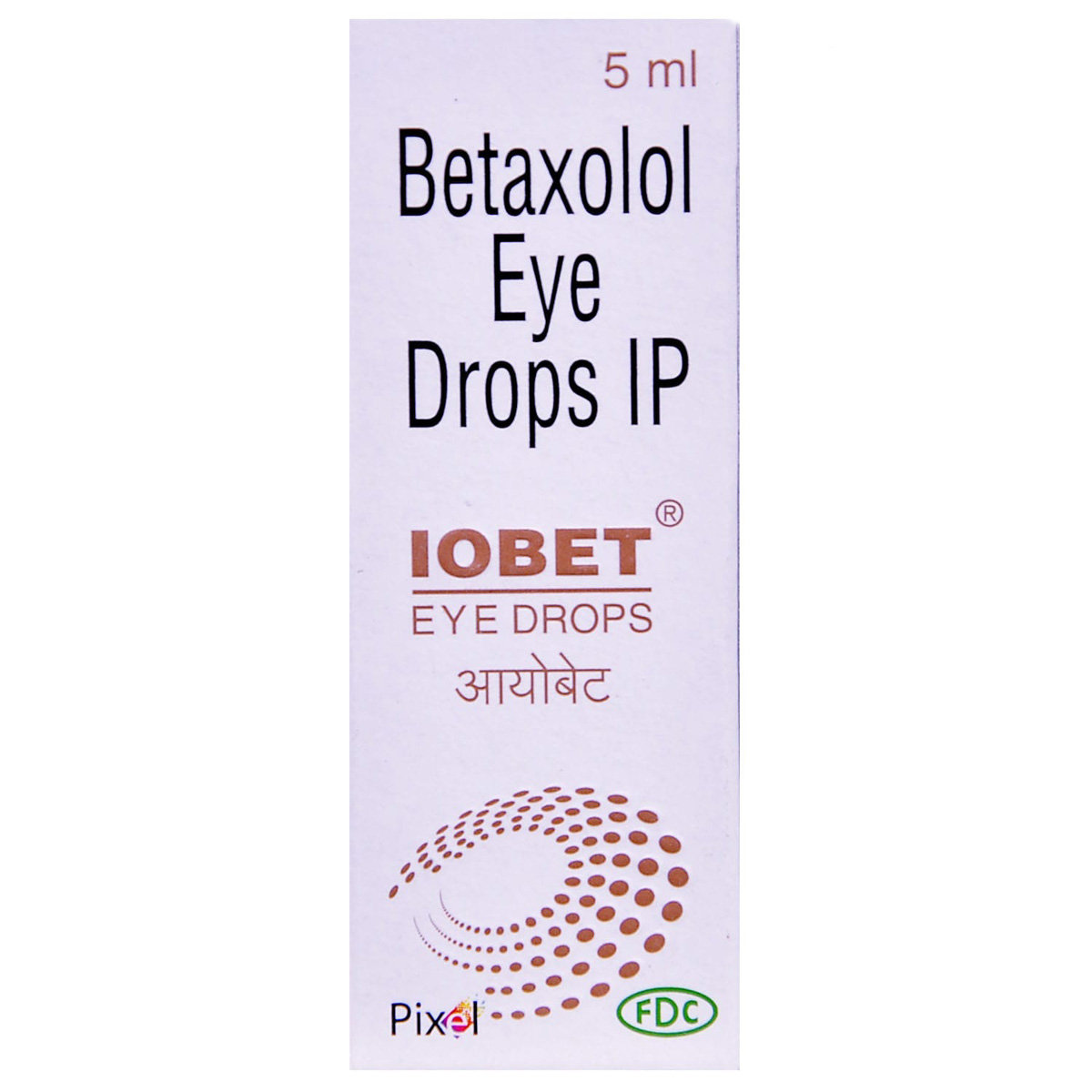Betaxolol
About Betaxolol
Betaxolol is used to treat increased pressure in the eye in conditions such as glaucoma (damage of optic nerve) and ocular hypertension (high fluid pressure inside the eye). Glaucoma is an eye condition which causes damage to the optic nerve (essential for good vision) due to abnormally increased pressure in the eye. Ocular hypertension is increased pressure in the eye due to poor drainage of aqueous humour (fluid in the eye that maintains normal pressure by its continuous flow).
Betaxolol works by decreasing the secretion of aqueous humour (a liquid that maintains normal pressure in the eyeball) by the ciliary body into the eyeball. Thereby lowers the pressure in the eye by reducing aqueous humour entry into the eyeball.
Use Betaxolol as prescribed. Your doctor will advise you on how many drops to instil based on your medical condition. In some cases, you may experience watery eyes, discomfort in the eye, headache or blurred vision. Most of these side effects of Betaxolol do not require medical attention and gradually resolve over time. However, if the side effects worsen or persist, please consult your doctor.
If you are known to be allergic to Betaxolol or any other medicines, please tell your doctor. Betaxolol is not recommended for children. You are advised to maintain a time gap of 5 to 15 minutes between using other eye drops and Betaxolol. If you are pregnant or breastfeeding, please inform your doctor before taking Betaxolol. You are advised to remove soft contact lenses before using Betaxolol as it may cause discolouration of soft contact lenses. Do not use Betaxolol if you have severe chronic obstructive bronchitis, severe asthma, heart failure, irregular heartbeats or slow heartbeat. Betaxolol may mask low blood sugar symptoms. Therefore, if you have diabetes, inform your doctor before taking Betaxolol. If you have myasthenia gravis (muscle weakness), inform your doctor as Betaxolol may worsen its symptoms.
Uses of Betaxolol
Medicinal Benefits
Betaxolol is used to treat increased pressure in the eye in conditions such as glaucoma (damage of optic nerve) and ocular hypertension (high fluid pressure inside the eye). Betaxolol decreases the secretion of aqueous humour (a liquid that maintains normal pressure in the eyeball) by the ciliary body into the eyeball. Thereby, lowers the pressure in the eye by reducing aqueous humour entry into the eyeball.
Directions for Use
- Follow your doctor’s advice regarding the dosage and duration.
- Lie down and tilt your head backwards. Pull your lower eyelid gently with your index finger to form a pocket. Instil the number of drops as advised by the doctor into the pocket of the lower eyelid. Close your eyes for 1-2 minutes.
- Replace the outer cap after use.
- Do not touch the container’s tip to the eye, eyelids, or surrounding areas, as it may contaminate Betaxolol.
Storage
Side Effects of Betaxolol
- Watery eyes
- Discomfort in the eye
- Headache
- Blurred vision
Drug Warnings
If you have low blood pressure, heart failure, slow heartbeat, coronary heart disease, myasthenia gravis, asthma, diabetes, angle-closure glaucoma, Raynaud's disease or Raynaud's syndrome (poor blood circulation) and hyperthyroidism (overactive thyroid gland), please inform your doctor before taking Betaxolol. Pregnant or a nursing mother are advised to consult a doctor before taking Betaxolol. You are advised to remove soft contact lenses before using Betaxolol as it may cause discolouration of soft contact lens. Betaxolol may mask low blood sugar and hyperthyroidism (overactive thyroid gland) symptoms. Therefore, if you have diabetes or hyperthyroidism, please inform your doctor before taking Betaxolol.
Drug Interactions
Drug-Drug Interaction: Betaxolol may have interaction with high blood pressure-lowering medicines (clonidine, rauwolfia alkaloids)
Drug- Food Interaction: Betaxolol may interact with pleurisy root (herbal medicine used to treat respiratory infections). Therefore, avoid pleurisy root while using Betaxolol. Avoid tobacco usage as it may increase the adverse effects of Betaxolol. Avoid potassium-rich foods such as oranges and bananas along with Betaxolol as it may increase potassium levels leading to side effects.
Drug-Disease Interaction: If you have low blood pressure, heart failure, slow heartbeat, coronary heart disease, muscle problem (myasthenia gravis), asthma, diabetes, Raynaud's disease (poor blood circulation) and hyperthyroidism (overactive thyroid gland) before taking Betaxolol.
Drug-Drug Interactions Checker List:
Safety Advice

Alcohol
cautionInteraction of alcohol with Betaxolol is unknown. Please consult a doctor before consuming alcohol with Betaxolol.

Pregnancy
cautionBetaxolol is a Category C pregnancy drug and is not recommended for use during pregnancy unless your doctor considers it essential.

Breast Feeding
unsafeAvoid breastfeeding while taking Betaxolol as it may be excreted in breast milk and cause adverse effects in the baby.

Driving
cautionBetaxolol may cause dizziness or blurred vision in some people. So, drive only when your vision is clear and are alert after taking Betaxolol.

Liver
cautionInform your doctor if you have a history of Liver diseases/conditions.

Kidney
cautionInform your doctor if you have a history of Kidney diseases/conditions.

Children
unsafeBetaxolol is not recommended for children.
Habit Forming
Diet & Lifestyle Advise
- Avoid intake of baked foods such as cakes, cookies, donuts or fried items such as French fries and stick margarine as these foods may worsen glaucoma and damage optic nerve.
- Cut down your coffee intake as it may increase pressure in the eye and replace coffee with green tea.
- Avoid exercises such as any position where the head is lower than body like inverted yoga pose as it may increase pressure in the eye. Doing selective exercises is advised for glaucoma patients.
Special Advise
You are advised to inform your doctor before any operation that you are using Betaxolol as it may change the effects of some medicines that are used during anesthesia.
Routine eye tests are recommended at least every 2 years to detect glaucoma as it does not show any symptoms initially.
Patients Concern
Disease/Condition Glossary
Glaucoma: It is an eye condition which causes damage to the optic nerve (essential for good vision) due to abnormally increased pressure in the eye. If it is not treated in time, it may cause blindness. Usually, there are no symptoms for glaucoma initially except the slow loss of vision gradually. However, some symptoms include visible rainbow-coloured circles around bright lights or blurred vision. Rarely, glaucoma can develop suddenly with intense pain in the eye, visual disturbance or nausea. Ocular hypertension is a condition caused due to poor drainage of aqueous humour (fluid in the eye that maintains normal pressure by its continuous flow). This leads to a build-up of excess fluid in the eye resulting in increased pressure inside the eye without any damage to the optic nerve. If ocular hypertension is not controlled, it may lead to glaucoma.
FAQs
Betaxolol is used to treat increased pressure in the eye in conditions such as glaucoma (damage of optic nerve) and ocular hypertension (high fluid pressure inside the eye).
Betaxolol works by decreasing the secretion of aqueous humour (a liquid that maintains normal pressure in the eyeball) by the ciliary body into the eyeball. Thereby lowers the pressure in the eye by reducing aqueous humour entry into the eyeball.
No, you are not recommended to wear contact lenses while using Betaxolol as it contains benzalkonium chloride, a preservative that causes a colour change of contact lens as it may be absorbed by soft contact lens. Benzalkonium chloride also causes irritation in the eye especially if you have disorders of the cornea (transparent layer at the front of the eye) or dry eyes. Therefore, you are advised to remove contact lenses before applying Betaxolol and reinsert after 15 minutes of using Betaxolol. Also, inform your doctor if you experience pain or stinging in the eye, abnormal sensation in the eye after using Betaxolol.
Yes, you may need to stop using Betaxolol before surgery as it may alter the effects of certain medicines that are used during anaesthesia. Therefore, you are recommended to inform your doctor or dentist that you are using Betaxolol before any surgery or dental procedure.
Yes, Betaxolol may cause temporary blurred vision or dizziness. Therefore, you are recommended to wait until your vision is clear and are alert before driving or operating machinery.
Betaxolol should be used with caution in diabetes patients as it may mask hypoglycaemia (low blood sugar) symptoms such as fast heartbeat, changes in blood pressure and tremors. Therefore, if you have diabetes, please inform your doctor before using Betaxolol.
Betaxolol lowers the pressure in the eye and decreases the risk of vision problems.
Lie down and tilt your head backwards. Pull your lower eyelid gently with your index finger to form a pocket. Instil the number of drops as advised by the doctor into the pocket of the lower eyelid. Close your eyes for 1-2 minutes. Replace the outer cap after use.
Betaxolol may cause side effects like watery eyes, discomfort in the eye, headache or blurred vision. Most of these side effects of Betaxolol do not require medical attention and gradually resolve over time. However, if the side effects worsen or persist, please consult your doctor.
Do not discontinue Betaxolol without consulting your doctor. To treat your condition effectively, keep taking Betaxolol for the prescribed duration.
Seek a doctor's advice if you are due to undergo any surgery, including dental surgery, if you have any other health conditions or if you are taking any other medications.




